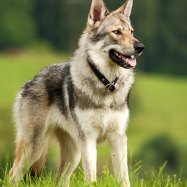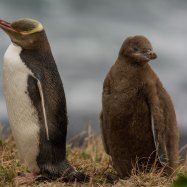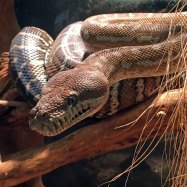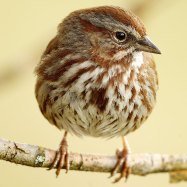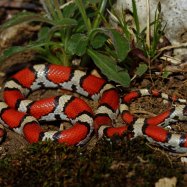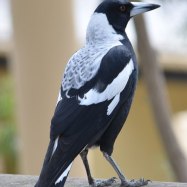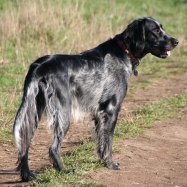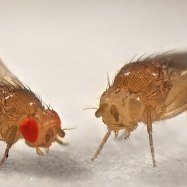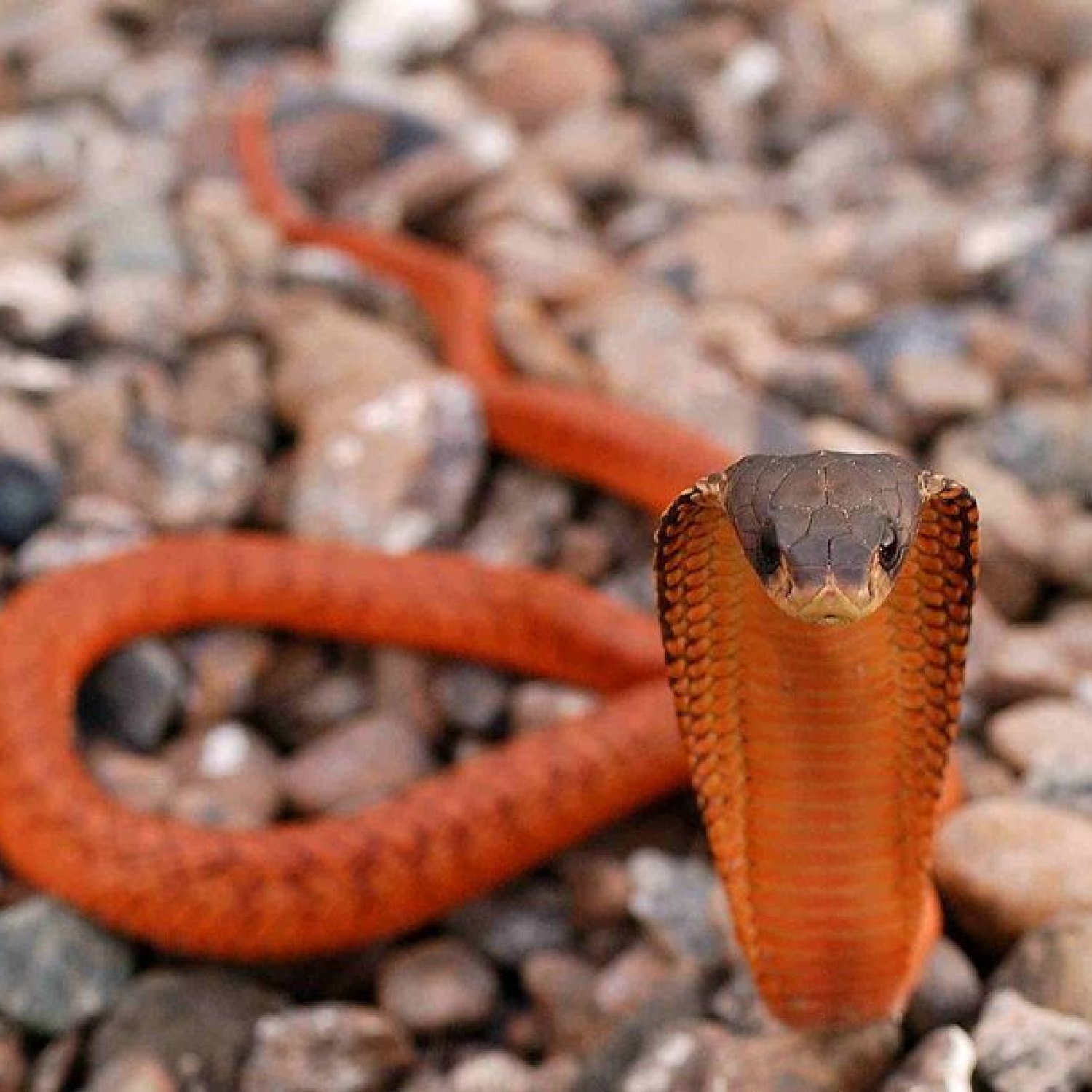
Arabian Cobra
1.5 to 2 meters
The Arabian Cobra, found in the Arabian Peninsula, is a venomous snake from the Elapidae family. It can reach a length of 1.5 to 2 meters and has a slender and elongated body shape. Be cautious when encountering this beautiful yet dangerous snake in its natural habitat.
Animal Details Summary:
Common Name: Arabian Cobra
Kingdom: Animalia
Habitat: Deserts, rocky areas, and mountainous regions
The Mysterious Arabian Cobra: A Slender Serpent of the Desert
The Arabian Peninsula is a land of diverse landscapes, from vast deserts to rocky mountains, and it is home to some of the world's most unique and intriguing creatures. One such creature that roams these lands is the mysterious Arabian Cobra, also known as Naja arabica. This reptile is a member of the Elapidae family and is highly prized for its distinct characteristics and enigmatic nature.The Scientific Overview
Before diving into the astounding features of the Arabian Cobra, let’s gain a foundational understanding of its scientific categorization Arabian Cobra. As an animal, it belongs to the kingdom Animalia and the phylum Chordata, indicating its complex body structure, including a spinal cord and a backbone. In the reptilian class, it falls under the order Squamata, which also includes lizards and other snakes. Known for their notorious venom, the Arabian Cobra belongs to the family Elapidae, along with other venomous snakes such as cobras and coral snakes.For those unfamiliar with snake terminology, the term Naja refers to the genus of cobra snakes, and arabica is a tribute to its native land, the Arabian Peninsula. These snakes can be found in countries such as Saudi Arabia, Yemen, and Oman, and are predominantly present in desert, rocky areas, and mountainous regions.
A Slender and Elongated Beauty
One of the most striking features of the Arabian Cobra is its long, slender body. They can grow up to a length of 1.5 to 2 meters, making them one of the longer species of cobra. Their slender body allows them to move swiftly and smoothly through the desert terrain, making them highly skilled hunters Alabai.Their unique body shape also helps them in burrowing and navigating through tight spaces, which they often use to hide or escape from predators. This elongated body, coupled with their snakelike movement, has earned them the nickname "slithering beauty."
The Color Palette
The Arabian Cobra comes in a range of colors, from pale golden brown to dark brown. However, the most common color seen in these serpents is a vibrant golden brown. This unique color allows them to blend in seamlessly with the desert sand, providing them with excellent camouflage and making it difficult for predators to spot them.The color of their scales also varies in different lighting conditions, from a shiny, golden hue in sunlight to a dull and matte finish in the shades. This property of color adaptation is another survival tactic that helps them hide in their surroundings.
A Carnivore's Diet
As a carnivorous species, the Arabian Cobra feeds primarily on other reptiles, birds, and small mammals. They are skilled hunters, quickly striking their prey with their venomous bite, paralyzing and killing them almost instantly. But what makes the Arabian Cobra stand out is its ability to consume prey much larger than itself, thanks to its highly flexible and expandable jaw.These slithering predators have a high metabolism and need to consume large amounts of food to sustain themselves. Hence, they are constantly on the hunt, making them a formidable predator in the desert ecosystem.
Mysterious Distribution
The Arabian Cobra is a species that has a strict distribution, mainly restricted to the Arabian Peninsula. This unique habitat is where they thrive, mainly due to the availability of prey, suitable climatic conditions, and ample hiding spots. The desert environment provides the ideal camouflage for them to ambush their prey while also offering enough shade and shelter during the scorching daytime temperatures.Their population is mostly concentrated around Saudi Arabia, Yemen, and Oman, but they can also be found in smaller numbers in other Middle Eastern countries such as Jordan, Iraq, and Kuwait. The strict distribution of these serpents has made them highly sought after in the exotic pet trade, leading to a decline in their numbers in the wild.
The Cobra's Mystical Powers
The Arabian Cobra has long been steeped in myth and mystique, and it is considered a symbol of power, strength, and magic in the Arabian Peninsula. In ancient civilizations, it was believed that the presence of this serpent could bring good luck, and its venom was considered a potent antidote for various ailments.But what makes the Arabian Cobra stand out is its iconic hood. When threatened, these snakes flare out their hoods, making them look larger and more menacing. This striking display is one of their defense mechanisms and serves as a warning signal to potential predators.
The Battle Against Extinction
Despite their mystical allure, the Arabian Cobra is facing numerous threats that are pushing them towards extinction. Their population is declining primarily due to habitat destruction and fragmentation, the illegal pet trade, and persecution by humans. As urbanization and human activities continue to encroach upon their habitats, the future of these magnificent creatures hangs in the balance.Numerous conservation efforts are underway to protect and preserve the Arabian Cobra, including establishing protected areas, monitoring and regulating the pet trade, and educating the public about the importance of these snakes in the desert ecosystem. However, more significant steps need to be taken to ensure the survival of this species for future generations to marvel at.
Conclusion
The Arabian Cobra is a mysterious and captivating creature that calls the Arabian Peninsula its home. From its slithering beauty to its color-changing scales and mystical powers, this snake has been the subject of fascination and intrigue for centuries. As we continue to learn more about these creatures and take steps to protect their existence, we can only hope that the Arabian Cobra will continue to roam the deserts, adding to the enchanting aura of the Arabian Peninsula.

Arabian Cobra
Animal Details Arabian Cobra - Scientific Name: Naja arabica
- Category: Animals A
- Scientific Name: Naja arabica
- Common Name: Arabian Cobra
- Kingdom: Animalia
- Phylum: Chordata
- Class: Reptilia
- Order: Squamata
- Family: Elapidae
- Habitat: Deserts, rocky areas, and mountainous regions
- Feeding Method: Carnivorous
- Geographical Distribution: Arabian Peninsula
- Country of Origin: Saudi Arabia, Yemen, and Oman
- Location: Arabian Peninsula
- Animal Coloration: Pale golden brown to dark brown
- Body Shape: Slender and elongated
- Length: 1.5 to 2 meters
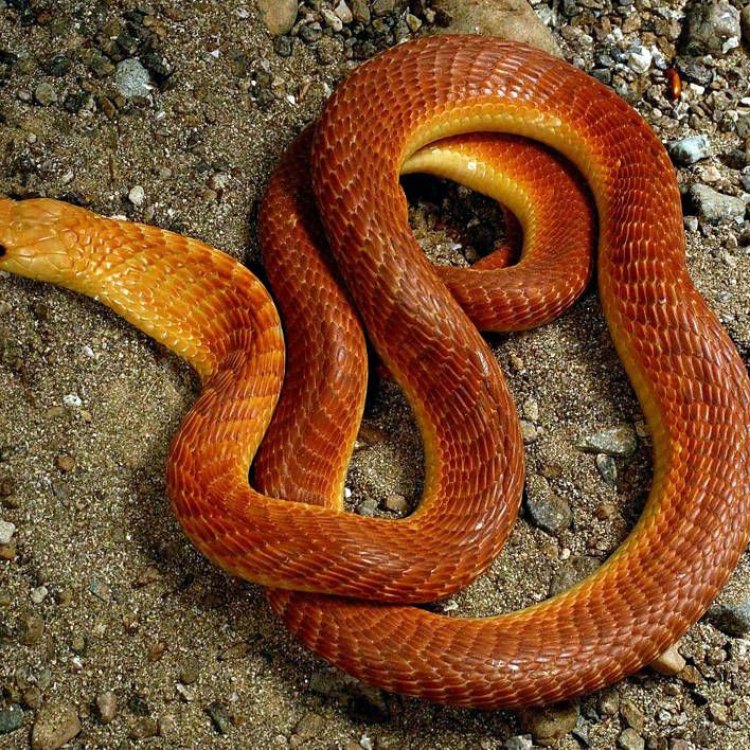
Arabian Cobra
- Adult Size: 2 to 2.5 meters
- Average Lifespan: 10 to 20 years
- Reproduction: Oviparous (lays eggs)
- Reproductive Behavior: Mating occurs during the spring
- Sound or Call: Hissing sound when threatened
- Migration Pattern: Non-migratory
- Social Groups: Solitary
- Behavior: Arboreal and diurnal
- Threats: Habitat loss and persecution by humans
- Conservation Status: Data Deficient
- Impact on Ecosystem: Apex predator, maintains balance in the ecosystem
- Human Use: None
- Distinctive Features: Hooded neck and fangs
- Interesting Facts: Arabian Cobras have neurotoxic venom that can cause paralysis and respiratory failure in prey
- Predator: Humans
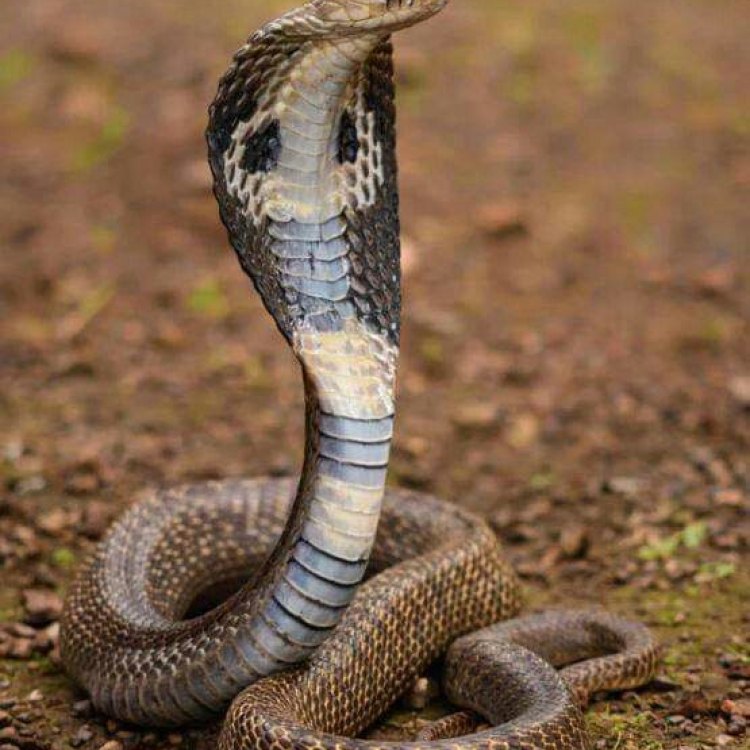
Naja arabica
The Enigmatic Arabian Cobra: A Majestic Deadly Beauty
Nature has always been a source of wonder and awe for humans. From the tiniest insect to the largest mammal, there is an inherent curiosity within us that compels us to learn more about these fascinating creatures. Among the countless species that inhabit the earth, there is one that stands out for its enigmatic nature, the Arabian cobra.The Arabian cobra, also known as the Asiatic cobra or Indian cobra, is a venomous snake found in the Middle East, particularly in Saudi Arabia, Jordan, and Egypt PeaceOfAnimals.Com. Its scientific name, Naja arabica, is derived from the Arabic word "arabica" meaning "Arabian." This elusive species is a true reflection of its namesake region, shrouded in mystery and beauty.
The Arabian cobra is a formidable predator, with a length of 2-2.5 meters and an average lifespan of 10-20 years. Its large size, coupled with its deadly venom, makes it one of the most feared snakes in the Middle East. However, beyond its deadly reputation lies a creature with unique features and captivating behaviors that make it a true wonder of nature.
The Life of an Arabian Cobra
Like other cobras, the Arabian cobra is a solitary creature, preferring to live and hunt alone. It is diurnal, which means it is mostly active during the day. This behavior is essential for the cobra's survival as it needs to bask in the sunlight to maintain its body temperature Arctotherium.One of the most distinctive features of the Arabian cobra is its hooded neck. When threatened, the cobra expands its hood, which is made up of loose skin and muscles, to appear more prominent and intimidating. This display of aggression is usually followed by hissing, a warning sign to deter predators or potential threats.
Interestingly, the Arabian cobra is an arboreal species, meaning it spends most of its time in trees. Its slender body and powerful muscles allow it to climb trees with ease, making it a skilled hunter in its natural habitat. From its vantage point, the cobra can spot and ambush its prey, which mostly includes rodents, lizards, and other small mammals.
The Reproduction of Arabian Cobras
The mating behavior of Arabian cobras is relatively simple. Mating occurs during the spring, and it usually involves a male cobra competing with other males for the attention of a female. These battles can sometimes be fatal, as cobras are known to use their deadly bites against each other. Once a male cobra has successfully courted a female, they engage in a courtship dance, which involves intricate movements, head bobbing, and tongue flicking.After mating, the female Arabian cobra will lay eggs, usually in a secluded spot such as a burrow or a termite mound. As an oviparous species, the female cobra will only lay eggs and will not provide any form of parental care. The eggs will hatch, and the young cobras, known as hatchlings, will be fully independent.
The incubation period for Arabian cobra eggs is around 50-60 days. Once hatched, the young cobras are around 30 cm in length and are already capable of producing their deadly venom. However, it takes about three years for them to reach full maturity and be able to reproduce.
The Sound of Warning: Hissing for Survival
The Arabian cobra is known for its hissing sound when threatened, which is used as a warning to potential predators. However, this hissing is not just a mere sound, but rather a potent tool of communication and defense.The hissing sound is produced by the cobra expelling air through its glottis, a narrow opening in its throat. This sound has a dual purpose, to intimidate predators and to warn them of the cobra's deadly venom. The cobra's hissing is a powerful display of its aggression, and many predators have learned to fear it.
The Impact of the Arabian Cobra on the Ecosystem
The Arabian cobra's importance goes beyond its deadly venom and predator status. This elusive species plays an essential role in maintaining the balance of the ecosystem. As an apex predator, the cobra preys on smaller animals, thus regulating their populations. This is crucial in preventing one species from becoming dominant and affecting the ecosystem's overall health.In addition, the Arabian cobra's presence helps control rodent populations, which prevents the spread of diseases. In areas where cobras have been eradicated, the rodent population has increased dramatically, leading to the spread of diseases such as the plague. Therefore, the presence of Arabian cobras is vital not just for their survival, but for the survival of the entire ecosystem.
Threats to the Arabian Cobra
Unfortunately, like many other species, the Arabian cobra is facing various threats to its survival. The most significant threat to this species is habitat loss. Due to rapid urbanization and development, the cobra's natural habitat is being destroyed, leaving them with fewer places to hunt and seek shelter.Moreover, the Arabian cobra is often perceived as a threat by humans, and as a result, it faces persecution. Many people in the Middle East believe that killing a cobra brings good luck, and they will often kill them on sight, even if they pose no immediate danger.
As a result of these threats, the Arabian cobra's conservation status is currently listed as Data Deficient by the International Union for Conservation of Nature (IUCN). This means that there is not enough information to determine its population size or the extent of its decline. This only highlights the urgent need for more research and conservation efforts to protect this elusive species.
Humans: The Ultimate Predator?
Humans have been the biggest predators to all animals, and the Arabian cobra is no exception. Yet, unlike other animals, the cobra poses no direct threat to humans unless provoked. Unfortunately, due to fear and misconceptions, humans often kill these creatures without realizing their crucial role in maintaining a healthy ecosystem.It is crucial for humans to understand the importance of the Arabian cobra and work towards coexisting with them peacefully. By raising awareness and implementing conservation measures, we can ensure the survival of this enigmatic species and maintain the balance of the ecosystem.
The Deadly Venom: A Fascinating Fact
One of the most intriguing facts about the Arabian cobra is its neurotoxic venom. This venom primarily targets the nervous system and can cause paralysis, respiratory failure, and even death in its prey. The cobra's venom is also highly potent, with just a single bite containing enough venom to kill an adult human.However, this venom also serves as a vital resource for medical research. Scientists are studying the cobra's venom to understand its molecular structure and potential medical applications. This research could one day lead to the development of life-saving medications.
The Arabian Cobra: An Enigmatic Beauty in Need of Protection
In conclusion, the Arabian cobra is a mysterious and captivating species that deserves our respect and protection. Its unique features, behaviors, and crucial role in the ecosystem make it an essential part of our planet's biodiversity. As we continue to learn more about these elusive creatures, it is vital to preserve their natural habitats and educate others about their importance. Only through a collective effort can we ensure the survival of this majestic, deadly beauty - the Arabian cobra.
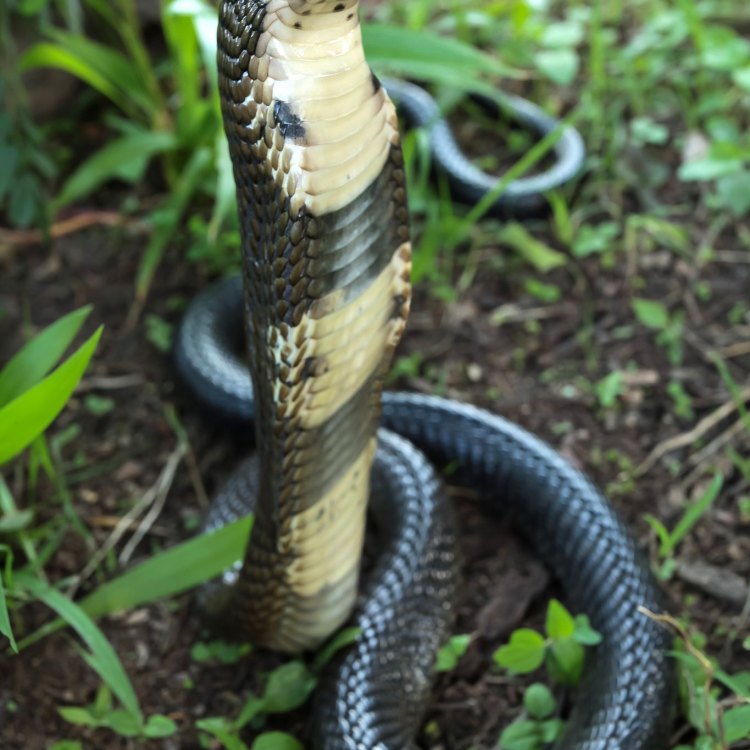
The Mysterious Arabian Cobra: A Slender Serpent of the Desert
Disclaimer: The content provided is for informational purposes only. We cannot guarantee the accuracy of the information on this page 100%. All information provided here may change without prior notice.

